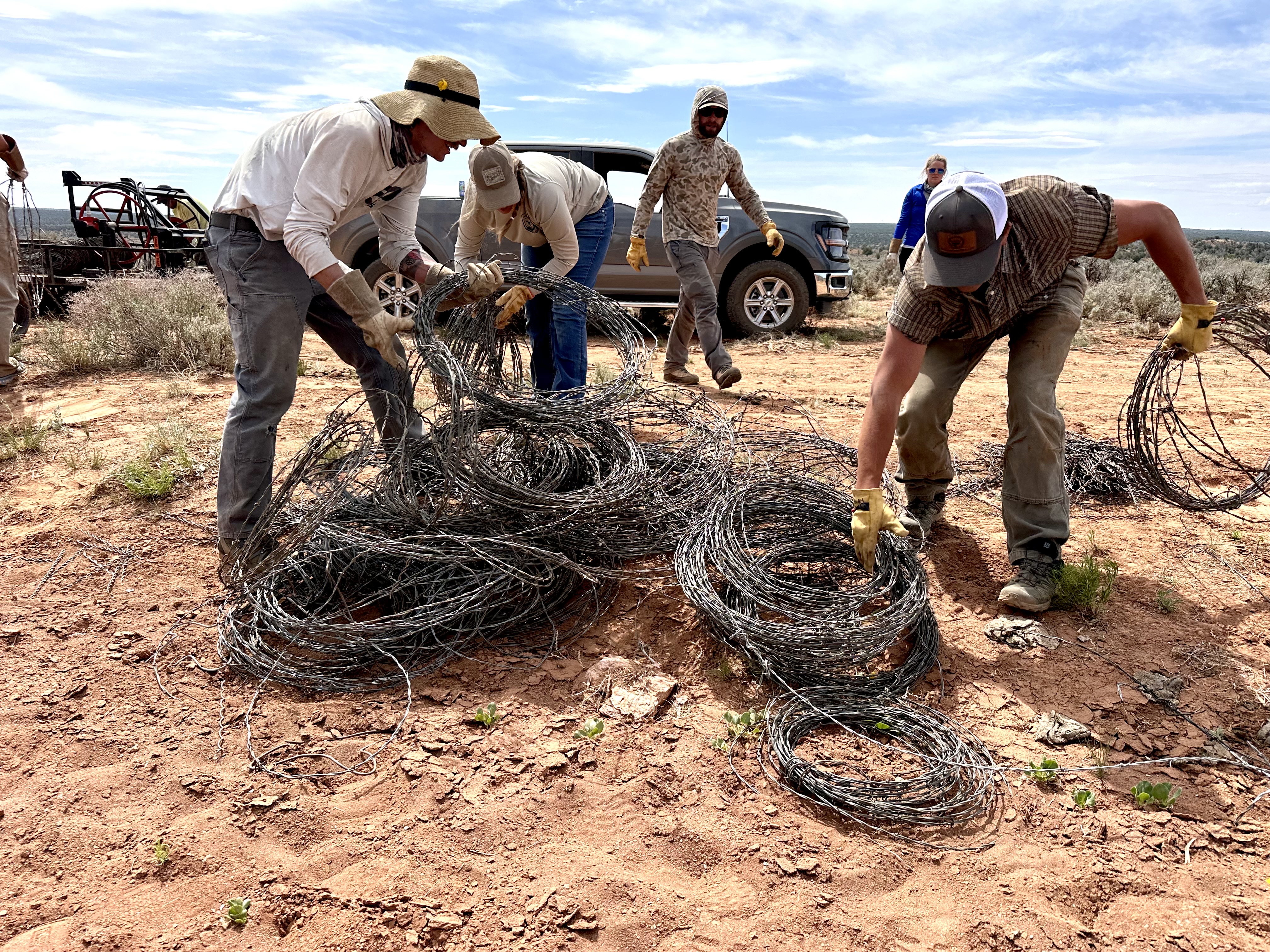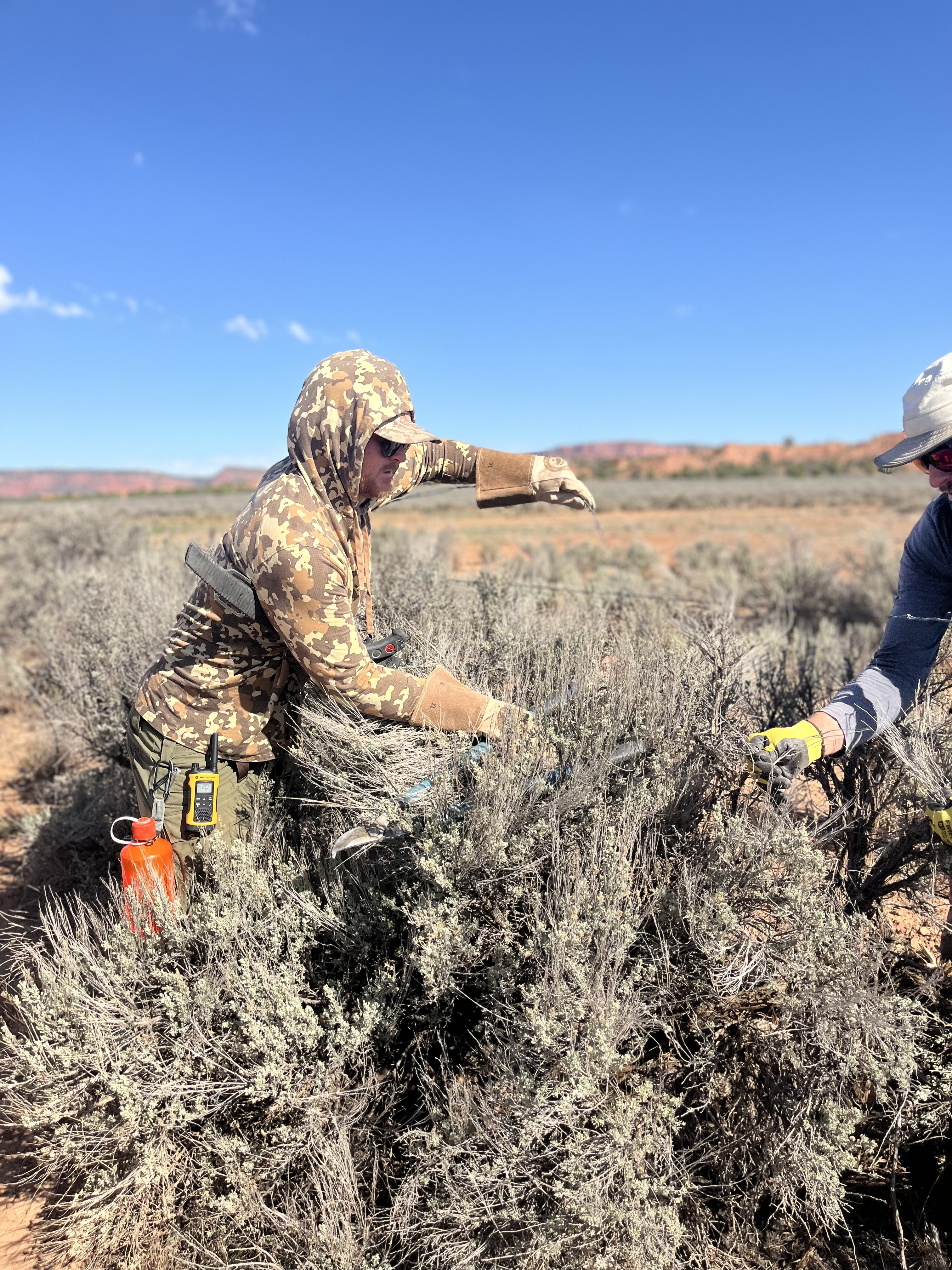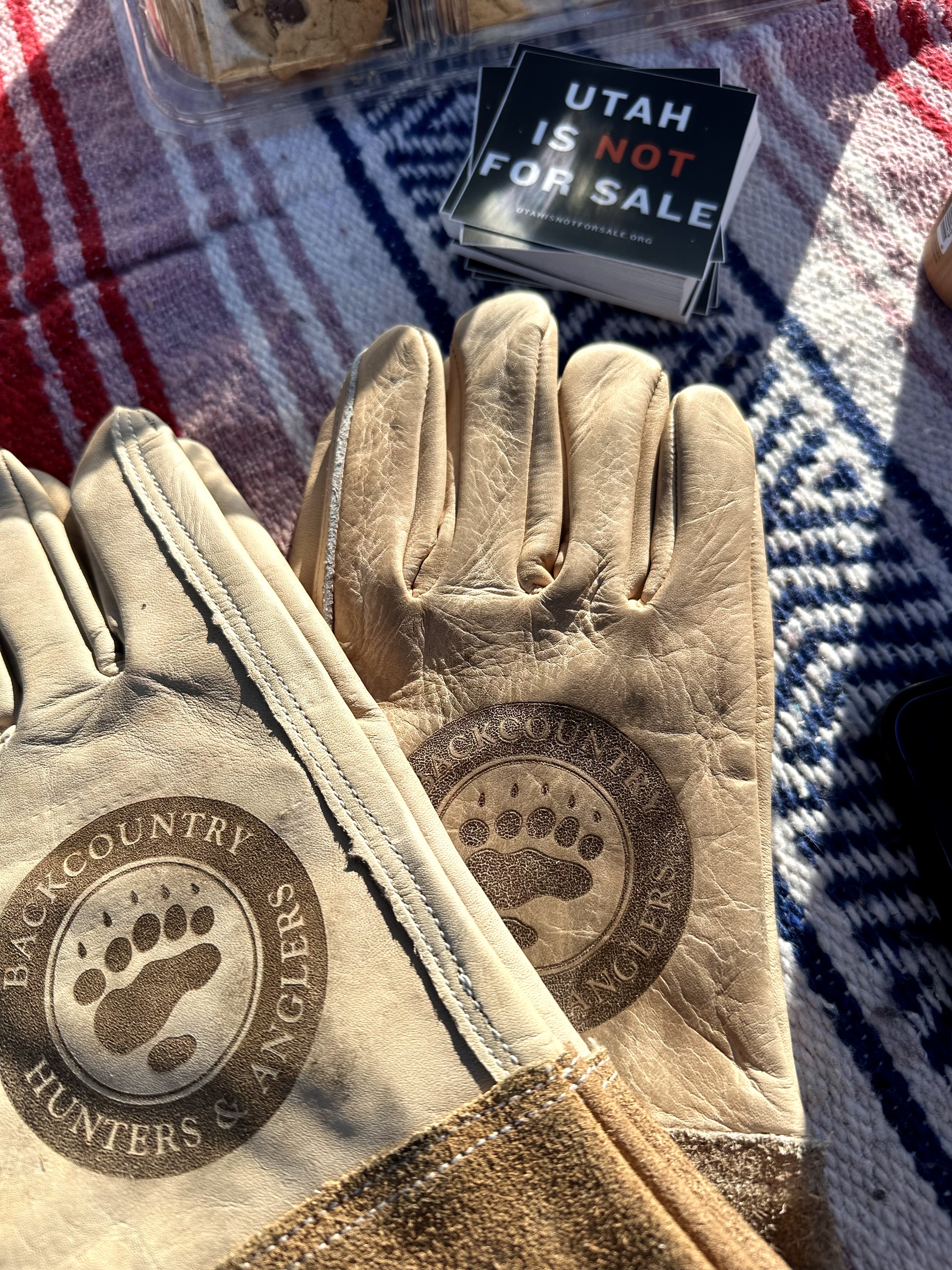Utah BHA Volunteers Show Their Grit in Paunsaugunt Fence Pull

If you haven’t had the opportunity to drive north to south following the geological shift from the alpine zones of the Panguitch area down along Highway 89 to the red rock desert of Kanab, Utah, you’re missing out. The transition from alpine lakes, ponderosa pines, and lush green meadows, to red sands, big basin sage, and prickly pear cactus is relatively abrupt. One might be tempted into thinking they have traveled onto a completely different continent within the span of 60 miles. This diversity of forage and the variety of landscape is exactly what migrating Mule Deer experience each fall as they travel from high up on the Paunsaugunt plateau down through the low-lying desert on their way to the Utah-Arizona border. This migration has been critical to the survival of these herds for thousands of years; yet with population growth, human development, and the littering of grazing allotment fencing in the region, that journey has become increasingly difficult.
Luckily for the mule deer Utah Backcountry Hunters and Anglers (BHA) has taken notice! Utah BHA was out at the end of May for part two of the successful Miles for Muleys project, this rendition named Bucks, Sweat, and Tears. The goal? Remove the bottom wire from these allotment fences allowing for mule deer to travel uninterrupted past the fencing. A group of 25 or so dedicated volunteers from Utah BHA as well as the Wildlands Network and Mule Deer Foundation worked together out on the famed Paunsaugunt unit to remove miles of old barbed wire. These particular fence lines were identified through Utah Division of Wildlife (UDWR) radio collar data and hundreds of miles of fencing surveying by our dedicated volunteers in the Miles for Muleys project last May. The process for removing the wire in theory was simple: cut the ties that hold the wire to the post, cut the stay that keeps the wire stable and in neat rows, pull the freed wire away from the fence, and finally wind up the wire into tidy quarter-mile rolls to be taken away to a staging area. In practice, it turned out to be far more arduous. With temperatures rising into the nineties, and the desert baking down on your back removing the wire became quite a chore. BHA volunteers from the Utah and Arizona chapters poured their blood, sweat, and tears(of laughter) into the project with full dedication. Volunteers fought sagebrush that had grown through the wires, and tumbleweeds that at points were chest high, all with the knowledge that a waiting rattlesnake could be hiding under the brush. With the helpful supervision of Andrew Hahne and Bard Erdrington, BHA stewardship coordinators sent down to operate two fence winders and add their expertise to the project, everything went very smoothly. All told volunteers detached, rolled, and removed over ten miles of bottom wire from the desert landscape.

When I sat down to write this blog post I imagined focusing on barriers to mule deer migration. I expected to write about how roadways, grazing allotment fencing, and habitat loss have created a potentially deadly barrier that could continue to hurt the population. However, although important, upon reflection that wasn’t the only story that needed to be told. This story was about the dedication of BHA volunteers. People who recognize the threats these barriers create and were willing to drive far out into the desert and put in the hard work to help. I’ve heard it said that although BHA doesn’t have the most members, they have the most dedicated volunteers. After this project, I find that to hold true. Our volunteers made the trek, which for many was five-plus hours, some arriving well after midnight, to spend a weekend working their butts off. The nature of the work dictated smaller groups with each person playing a specific role. It was amazing to see how within these groups each person slid into a particular task with minimal discussion, and within no time were working like an experienced fencing team. Everyone worked hard to keep the project running smoothly. Although the work was extremely strenuous the mood over the weekend remained high. Joking, friendly banter and the swapping of stories made the day seem to fly by. This overall feeling of comradery continued after the work had ended. Volunteers set up an archery and .22 course and spent the evening honing their accuracy, before rounding out the night with a wild game potluck. Participants shared a variety of elk brats and sausages, jalapeno poppers, and upland game dishes prepared over an open fire. The connection forged between individuals through the day's hard work was clear as people sat and talked around the campfire late into the night.
This I believe is the power of our public lands. They give common ground on which to stand, providing the opportunity to connect. A place that is each of our shared benefit and responsibility. Each volunteer displayed not only their commitment to enhancing public lands, but each and every showed an eagerness to protect them, a trait synonymous with BHA. I feel proud to have been a part of that shared experience and look forward to future projects with these amazing BHA volunteers.
A big thank you is owed to Bard and Andrew for providing the knowledge and leadership that made the project go smoothly; Katie and her family for driving extra to deal with a load of crap (porta potty for those who weren’t there); and ultimately all the volunteers who came out and made the project happen. In addition, I'd like to thank our sponsors GOTPOOP for the porta potty donation, Epic Brewing, Athletic Brewing, Cowboy Cauldrons, Peak Refuel, and Irish Setter. Finaly this work wouldn’t have been possible without federal grant money from both the National Fish and Wildlife Foundation and the Bureau of Land Management.

4